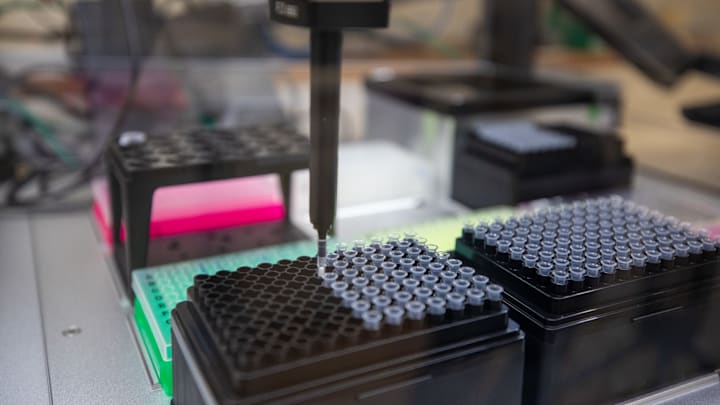Researchers at Stanford University have used CRISPR-Cas9 technology to investigate the genetic factors involved in aging neural stem cells (NSCs). These cells are crucial for brain repair and neurogenesis, yet their activity slows down with age. The team identified hundreds of genes associated with this decline, with a particular focus on genes that, when disrupted, could rejuvenate these cells. One key gene, SLC2A4, was found to regulate glucose metabolism, linking metabolic processes to the decline in stem cell activity during aging.
Glucose metabolism and neural stem cell activity
The research showed that neural stem cells become less active due to changes in glucose metabolism as the brain ages. Specifically, the SLC2A4 gene, which encodes for the glucose transporter GLUT4, was found to keep NSCs in a dormant state. By knocking out this gene in mice, scientists were able to reactivate these cells and increase neurogenesis, offering hope for interventions that could potentially slow cognitive decline in aging individuals.
Implications for anti-aging therapies
The discovery that CRISPR can manipulate glucose metabolism to enhance the function of aging neural stem cells opens up the possibility that we might start to see anti-aging treatments that actually might work. By targeting key metabolic pathways, researchers believe they could develop therapies to rejuvenate the brain, potentially slowing down or reversing age-related cognitive decline. These findings might also have potential applications in treating brain injuries, stroke, and age-related disorders.
Future directions in genetics and aging research
This research marks a significant step in understanding how genetics and metabolism intersect to influence brain aging. In the future, scientists will likely see if the idea works as well on humans as it did on the mice. If successful, it could pave the way for gene therapy aimed at slowing or reversing aging, potentially improving the quality of life for older populations.
What is CRISPR, and how is it used in neural aging research?
CRISPR (Clustered Regularly Interspaced Short Palindromic Repeats) is a gene-editing technology that allows precise changes to an organism's DNA.
What are the risks or challenges associated with using CRISPR in brain research?
While CRISPR is a powerful tool, it does have some risks that can include off-target effects, where unintended genes are edited, potentially causing harmful side effects. Ethical considerations also arise in gene-editing technologies, especially when they involve human applications.
Follow GeekSided to stay up to date with all scientific updates.
